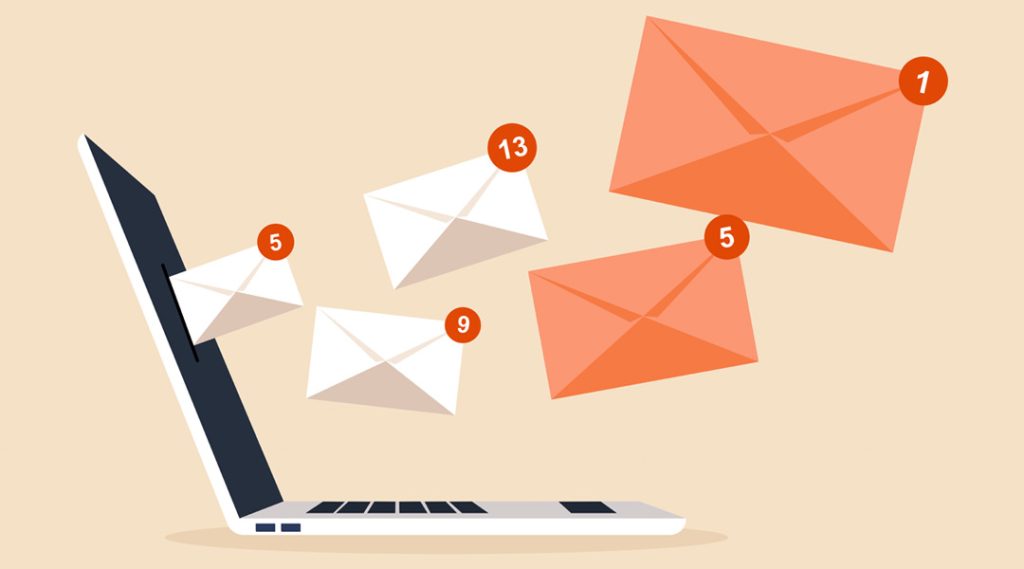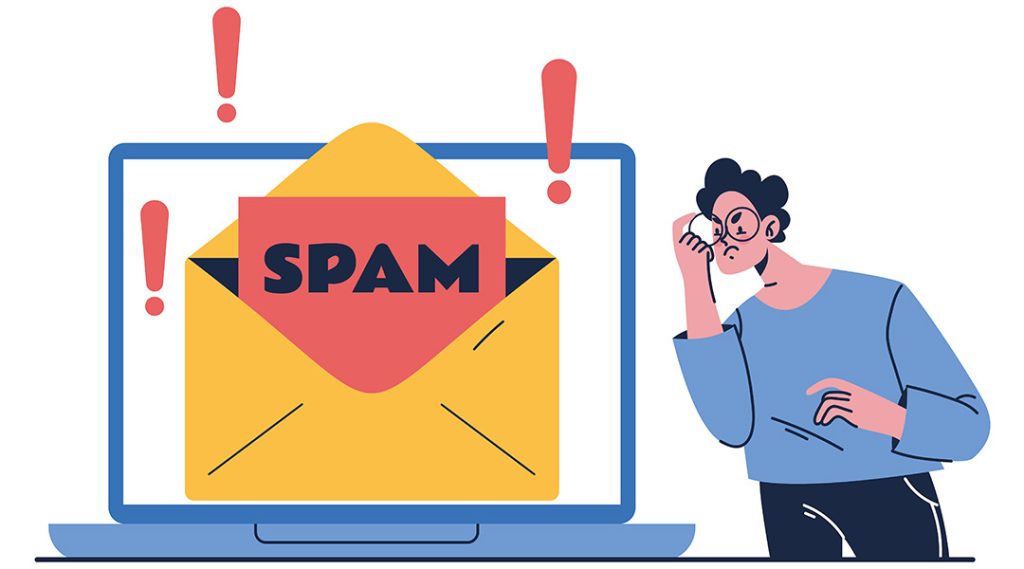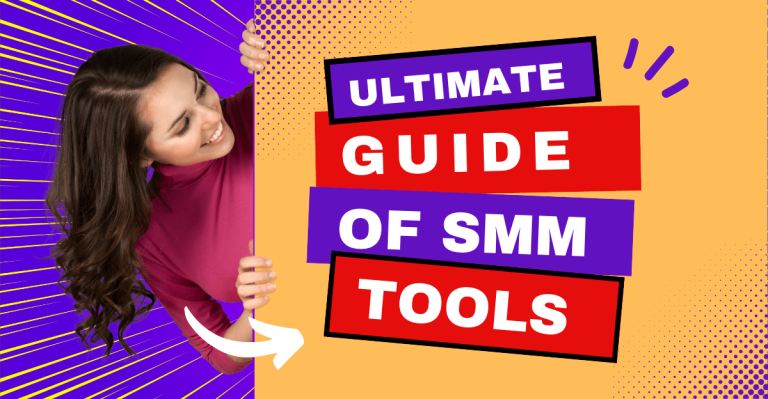EMAIL LIST CLEANUP (7/8)
Every successful email marketing campaign starts with a clean list of valid and active subscribers. If you don't take care to clean your email list, issues can arise that make it difficult to deliver your messages to your inbox.
In this section we will cover:
- The role that a clean email list plays in whether or not your campaign is delivered to the recipient's inbox.
- Different types of email addresses you should keep off your list at all costs (including three types of spam traps and how to avoid them).
- 7 quick steps to keep your list clean to include only valid and active emails.
EMAIL CLEAN LIST ROLE

List hygiene is a validation process that ensures that your email list consists only of valid and active email addresses. List hygiene plays a big role in determining whether your emails reach your inbox or spam folder.
To keep your list as clean as possible, there are a few types of email addresses to keep off your list at all costs.
FIRST TYPE OF EMAIL ADDRESS
The first type is an unknown user. Unknown users are email addresses that either never existed or are no longer used. If such emails exist in your list, this gives the message to the electronic mailbox providers that you are engaging in unorthodox and bizarre email acquisition practices - which is terrible for your reputation. Sending email to an unknown user is basically like sending mail to a house where no one lives. If someone caught you delivering a package to an abandoned house, they'd probably be a little suspicious, right? Well, the same thing is happening here.
The good news: There are procedures by which unknown users on your list can be identified. How? When you send to this type of address, mailbox providers will return an automated message indicating that the email address is an unknown user. When this happens, you should immediately remove the unknown user from your database and never send to them again. The general suggestion is to maintain an unknown user rate of less than 2% of your subscriber database.
SECOND TYPE OF EMAIL ADDRESS
The second type of email address to keep off your list is a spam trap. The spam traps are email addresses that do not belong to real or active users. They are used to identify senders who follow bad email address collection practices.
When a mailbox provider sees a sender sending a spam trap message, it assumes that the sender obtained that email address through questionable means and is therefore either a spam sender or a legitimate sender following bad practices. Do you want to fall into this category?Definitely not! If your mailbox providers see you sending messages to spam traps, they may deliver your email to the spam folder - or block it altogether - which will be tragic for your sender's reputation with the consequences.
3 TYPES OF JUNK MAIL TRAPS

There are three types of spam traps to watch out for:
TRAP OF RECYCLED SPAM
The first is called recycled spam trap. It is an email address that belonged to a real person at some point in the past. But eventually, it was abandoned - and a mailbox provider saw it and turned it into a spam trap. These addresses have been repurposed to catch abusive messages and can end up on your list.
PARTHENON SPAM TRAP
The second type is called virgin spam trap. Unlike recycled traps, these email addresses were never owned by active users and were created solely for the purpose of catching spam. You are likely to end up with a few of them on your list if you have not taken the proper steps to obtain addresses legally and with the owners' consent.
TYPO TRAP FOR JUNK MAIL
The third type is called typographic spam trap. This type of spam trap has a misspelled domain name (hence the word "typo") and is used by mailbox providers and blocking list builders to identify senders with bad practices.
7 WAYS TO KEEP YOUR LIST CLEAN
So, what can you do to keep your list clean and avoid getting bad addresses?
RICH CONVERSATION
Always send to lists where the owner has confirmed the email his. On such a list, the owner has expressly given permission to receive marketing emails from you. If the list you are sending to has been borrowed, purchased, or shared publicly on the Internet, it is not a list based on the permission of the owner and is more likely to contain invalid addresses. The more invalid addresses on your list, the worse the hygiene of your list and the lower your sender's reputation.
REGULAR CAMPAIGNS
Email your list regularly. The more consistent your mailings, the less likely you are to see high abandonment rates from unknown users. This helps you avoid sending to old addresses that have turned into spam traps.
IDENTIFICATION OF PATTERNS
Track the age and activity of your overall database to look for patterns and determine when subscribers start to lose interest in your brand.
REACTIVATION CAMPAIGNS
If you have an active subscriber on your list with little to no engagement, try to either get them to engage through a re-engagement campaign or remove them from your list altogether.
HARD BOUNCE
Always remove unknown users as soon as you receive a hard bounce.
Find out how your server processes bounces. You don't need to understand every nuance technique, but it's good to get a high-level understanding of how your bounces are handled so you can try to avoid them.
Use an email verification tool such as Validity BriteVerify to make sure you verify the email addresses on your list. (We'll discuss email verification in our next article.)
WAYS TO CREATE AN EMAIL LIST
There are many ways to build an email list and it is important to follow best practices for list acquisition.
For example, suppose a marketer wants to send to a large list because he thinks it will help him reach more people. To do this, buys a long email list from a stranger, unaware of the negative impact it can have on email marketing and its deliverability as a sender.
Or maybe instead of buying a list, the dealer decides to send a reactivation campaign on a list that has already been organically acquired - but the list has not been verified for many years.
In both these cases, the marketer risks being sent to spam traps, which means that their email campaigns will never see the light of day. Verification by email is essential for maintaining proper list hygiene and reducing the number of unwanted traps you send.
EMAIL VERIFICATION METHODS
Tools like Validity BriteVerify can help you confirm that the email addresses on your list are safe to send to. BriteVerify uses 3 steps to verify email addresses:
- First, it determines whether the email address follows the correct drafting and has the physical properties of a valid email address.
- Second, it verifies the validity the email domain (MX record).
- Finally, it uses special interface, developed in conjunction with mailbox providers, to contact their email servers and determine if the email address exists on that email server.
Verifying your email list and removing emails that are unknown, invalid or have invalid domains greatly improves the hygiene of your list and positively impacts your deliverability.
In our eighth and final lesson, we will see how the your newsletter will be delivered to your inbox and 9 ways to avoid spamming complaints.



